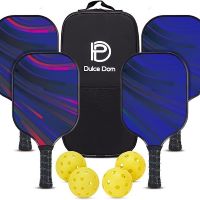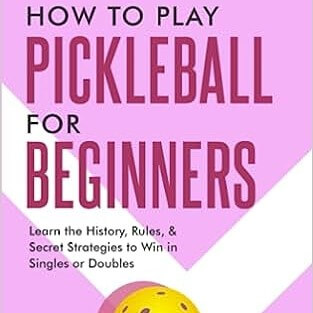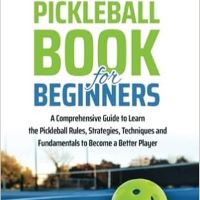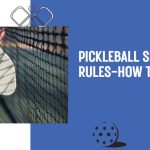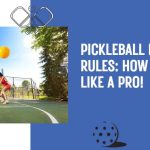Whenever I introduce pickleball to someone new, I have to clarify pickleball kitchen rules.
It’s important to remember that there are some rules and etiquette that must be followed. If we talk about Pickleball kitchen rules, it prohibits touching the line or zone while volleying. You, your partner, and any objects physically connected to you are included in it.
In this blog, we’ll discuss the basics of Pickleball kitchen rules. Like: what is non volley zone in pickleball, facts, and other relevant topics.
Thanks for joining us, and let’s get started!
You Might Also Like:
What Is Kitchen in the Pickleball?
The non-volley zone is one of the main areas of the pickleball court. This area is between the net and the non-volley line. And no volley zone in pickleball is called the “Kitchen”.
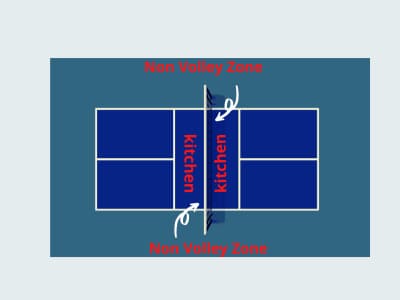
There are different rules in the kitchen zone than in the rest of the court. It is not possible to hit a volley in the non-valley area.
Despite the fact that no one knows the origin of pickleball’s kitchen name, many believe it was borrowed from shuffleboard. Similarly, the shuffleboard has a kitchen area where players lose ten points if they land.
Note:- You can also check our blogs on basic pickleball rules.
What Are the Pickleball Kitchen Rules?
The Pickleball Kitchen Rules are an important part of the game. These rules help to ensure that players have a safe and enjoyable game. The Pickleball Kitchen Rules were created by the USAPA (USA Pickleball Association). They set out how players should act in the kitchen area during a game. The rules cover all aspects of play, from serving to scoring, as well as etiquette when it comes to behavior in the kitchen.
The main rule is that all players must remain within their designated court area at all times, which includes keeping their racquets and other equipment inside their court space. This ensures that no one can interfere with another player’s shot or disrupt other games nearby.
Additionally, pickleball must be served across designated lines marked on each side of the net, and only one player may serve at a time. Double hits will not be allowed during play in order to keep things fair for everyone involved.
Plus, it is important for all participants to abide by the “kitchen rules” which include: no eating food on court; no sitting on equipment boxes while playing; and throwing away any trash immediately after use so others can enjoy clean courts free from debris!
Check out our blogs on how to learn pickleball drop shot, and pickleball hand signals for a smart game.
Official Rules From the IFP Rule Book
The official tournament rule book of the International Federation of Pickleball (IFP) states the following:
Rule 9.A:
The only place where volleys can be started is in the non-volley zone. When using their front wheels, wheelchair users may come into touch with the pickleball non volley zone.
To volley the ball (hit it before it bounces), you must be standing outside the kitchen and not on or touching the kitchen line.
Rule 9.B:
The non-volley zone may not be touched by the volleying player or anything that comes into contact with them while they are volleying.
- Rule 9.B.1—The swing, the follow-through, and the momentum from the motion are all parts of volleying the ball.
- Rule 9.B.2—It is improper if the paddle hits the non-volley zone while making the volley motion, either before or after making contact with the ball.
Rule 9.C:
A player commits an error if their momentum causes them to make contact with anything that is in the non-volley zone, including their partner.
- Rule 9.C.1 – It is wrong if the player enters the non-volley zone before the ball is ruled dead.
Rule 9.D:
A player cannot volley a return. If they have touched the non-volley zone in any way until both of their feet have reached the playing surface entirely outside of the non-volley zone. It’s not permitted to act like standing inside the non-volley zone, hopping up to hit a volley, and then landing outside the non-volley zone.
Keep out of the kitchen at all times. If the ball has not bounced. If you start your volley inside the kitchen zone or on the kitchen line, you cannot finish outside the kitchen—it’s a fault. You must have both feet grounded and re-positioned outside the kitchen before beginning to volley the ball if you plan to volley it.
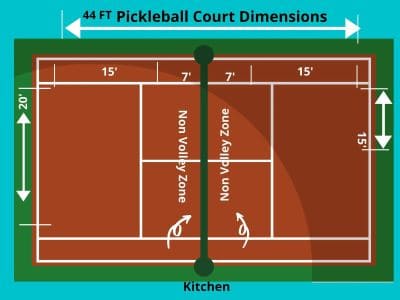
Rule 9.E:
In the non-volley zone, players might enter at any time except when they are volleying.
Rule 9.F:
It is permissible for a player to enter the non-volley zone before or after returning a bounced ball.
Rule 9.G:
It is possible for a player to return a bounced ball if anyone remains inside the non-volley zone. If a player hits a bounced ball and does not leave the non-volley zone, there is no violation.
Rule 9.H:
When a player returns the ball while their partner is in the non-volley zone, there is no violation.
Players have actually thought that when one player hits a volley shot, both players need to stay out of the kitchen. In the kitchen or on the kitchen line, that player can be, as long as the player volleying does not come into contact with that player.
Note:- Only volleyed balls are subject to the kitchen rule. In the event that the ball has already bounced, the kitchen rules no longer apply.
Pickleball Kitchen Facts
Here are some important facts to learn about the pickleball no volley zone.
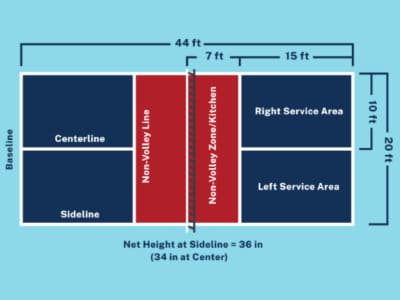
- A kitchen is an area that is not used for volleyball, formerly known as a non-volleyball zone (NVZ) but is more commonly referred to as a kitchen. For simplicity’s sake, I’ll simply refer to it as the kitchen.
- A kitchen court has a 7-foot-deep area on either side of the net that extends the entire length of the court. There are two of them, it can be one on either side of the net.
- Kitchen lines are two inches thick, as are all pickleball court lines; they are considered part of the kitchen.
- There is a kitchen rule in place to prevent players from hitting the ball directly over the net or stop hoping play ball. If this rule were not in effect, pickleball matches or games would be hard to play fairly and reasonably, allowing for more than just smashing the ball into the opponent’s racket.
- There is no space above the kitchen, it is the ground. While volleying a ball, you are permitted to place your paddle over the kitchen line, but you cannot touch the line nor stand inside the kitchen.
FAQs
The non-volley zone pickleball, also known as the “kitchen”, is the seven-foot area around the net in pickleball. It is illegal to volley the ball while standing in this zone.
You can go into the kitchen at any time during a pickleball game, but you can’t stand in the kitchen and volley. Therefore, you can hit a ball that has bounced from the kitchen if the ball has bounced.
There is a kitchen in pickleball that is seven feet from the net on both sides of the net going to the sidelines. Non-volley zone is the official name of the kitchen. If a player is standing in the kitchen or on the kitchen line, they cannot volley the ball.
Yes, a pickleball serve can hit the kitchen line. However, there are some rules that must be followed in order for the serve to be considered legal. The ball must bounce before it crosses the line, and the serve must be within the kitchen line’s boundaries. Additionally, the ball must be served from behind the baseline and within the designated service court.
Well, It’s a Wrap!
The pickleball kitchen rules are an important part of pickleball etiquette and should be followed by all players. They provide guidance for the game and ensure that everyone enjoys a safe and fair experience. From the proper use of kitchen space to the necessary equipment, pickleball kitchen rules are essential for anyone wishing to participate in this fun sport.
Knowing how to properly navigate these rules will help ensure that everyone has a positive experience while playing. Keeping these guidelines in mind will also help keep everyone safe on the court, allowing them to focus on their skills rather than worrying about potential safety issues.
To avoid earning faults and losing games, you must practice and constantly be aware of the kitchen rules of pickleball.

I am the founder of BallSportsPro, a popular pickleball resource for players of all levels. I am a former professional tennis player, started playing pickleball in 2009 and quickly fell in love with the game. I launched BallSportsPro in 2018 to share my passion for the sport and to provide pickleball players with the latest news, tips, and gear reviews. Today, BallSportsPro is one of the most popular pickleball resources on the web, reaching hundreds of thousands of players each month. In addition to running the website, I also a regular contributor to Pickleball Magazine and a member of the USAPA Pickleball Ambassadors program.

